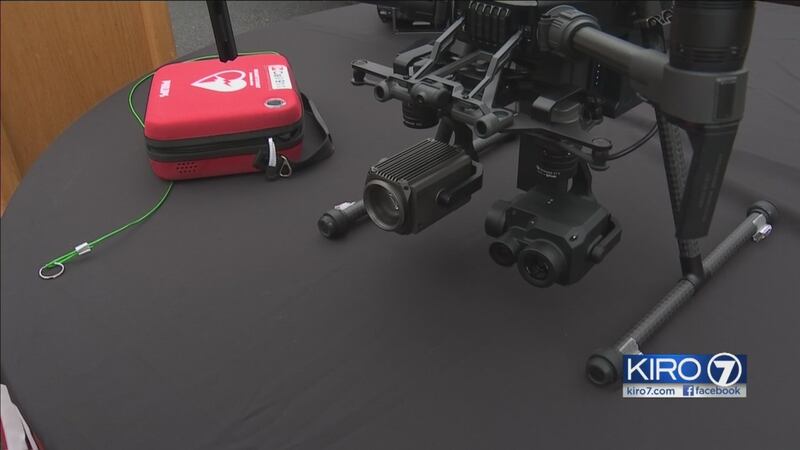The first drone program run by a fire department in Western Washington launched Thursday at Eastside Fire and Rescue.
The fire department gave a demonstration at its North Bend station on how the new technology will help save lives
The drone costs $35,000, weighs 12.5 pounds, and is much bigger than the drones you typically see county search and rescue crews use -- and it comes with more features.
Two notable ones -- it’s equipped with a thermal camera, which means it can search for people at night, and it has the ability to drop off supplies to people in need.
Eastside Fire & Rescue drone pilots have sent the drone into the air carrying a defibrillator.
Scroll down to continue reading
More news from KIRO 7
- Hurricane Florence live updates: Category 2 storm barrels toward Carolina coast
- Teen girl stabbed, killed by high school classmate in fight over boy, police say
- Man found dead in car after garage fire near Everett
- Fire burns townhomes under construction in Wallingford
- Do you have an investigative story tip? Send us an email at investigate@kiro7.com
“We also use it on a trail if we couldn't access a patient. The quicker we can get these lifesaving equipment to the patient, the better,” said Capt. Steve Johnson, with Eastside Fire & Rescue.
It can also drop other supplies, like a life jacket, medication, a radio, cellphone -- anything up to 4.5 pounds to someone in need.
The Medic One Foundation donated the drone, to help with the growing number of backcountry emergencies and water rescues that the department handles.
“We're very proud to gift this drone to Eastside Fire and Rescue to help save lives,” said Jen Sprake, executive director at Medic One.
The department's fire chief said one of the most useful technologies the drone adds to their toolkit is the thermal camera.
“It’ll allow us to find folks either underwater, in the snow, up on a trail,” said Chief Rich Burke, of Eastside Fire & Rescue.
Finding the victim more quickly means a better chance of returning someone to their family, and it reduces the risk for first responders at the same time.
The drone can even help in regular fire calls, helping find where the fire is in a building, using that thermal technology.
“It will really truly save lives,” Burke said. “It will be deployed often.”
The drone can fly up to 85 miles per hour (though the department said it won’t be flying it that fast) and can also fly in inclement weather.
The fire department needs to train a few more drone pilots and finalize policies before the drone will be put into regular use, but it’s expected to go into service within the next couple of months.
Cox Media Group








